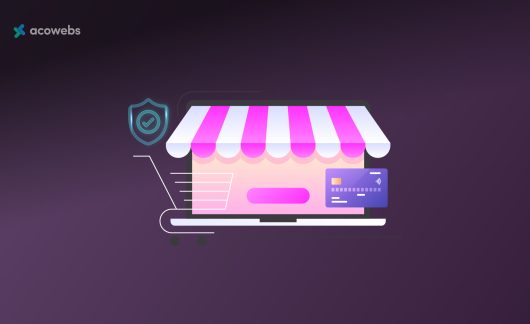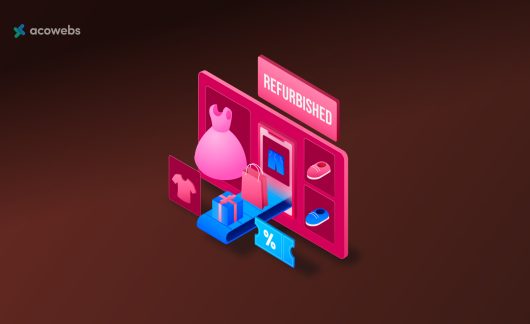In the dynamic landscape of modern commerce, the bricks-and-clicks business model, blending traditional physical stores (“bricks”) with online digital platforms (“clicks”), has emerged as a powerful strategy.
It can be traced back to the evolution of retail, as businesses transitioned from solely physical establishments to the eCommerce surge of the late 20th century. This hybrid model, exemplified by giants like Amazon and Walmart, has evolved significantly, offering an integrated shopping experience.
Its components include physical stores, eCommerce websites, mobile apps, data analytics, and a unified customer database, ensuring consistency across all channels. It caters to the growing consumer demand for convenience and variety, allowing shoppers to transition seamlessly between online and offline modes.
This comprehensive guide explores the model’s intricacies, benefits, and challenges. It provides valuable insights for businesses and consumers as they navigate the dynamic world of brick-and-click commerce and adapt to the changes.
With technology constantly reshaping how we shop, understanding this model becomes increasingly critical.
What Is Bricks-and-Clicks?
The bricks-and-clicks business model combines traditional physical retail (the “bricks”) with online digital commerce (the “clicks”).
In this model, businesses maintain a physical presence, such as brick-and-mortar stores, while establishing an online eCommerce presence through websites, mobile apps, or other digital platforms.
Global eCommerce revenue hit $5.2 trillion in 2021, with a projected growth of 56% in the coming years, set to reach $8.1 trillion by 2026.
The goal of this hybrid model is to provide customers with a seamless and integrated shopping experience, allowing them to engage with the brand both in the physical world and in the digital realm.
The following benefits characterize it:
1. Operational Flexibility
This approach excels in providing heightened convenience and adaptability compared to single-channel retail. Customers have the freedom to decide how they wish to interact with the business, whether by visiting a physical store or making online purchases.
This empowers customers to tailor their shopping experience to their preferences and needs. Some may opt for the tangible in-store experience, relishing hands-on product inspection and personal assistance.
Others may prefer the ease and efficiency of online shopping, enjoying the convenience of ordering from anywhere. This flexibility ensures customers have options to suit their unique lifestyles and situations, ultimately enhancing their overall satisfaction and loyalty.
2. Unified Shopping Experience
Although the shopping experience is flexible, it should remain consistent and unified. This means offering the same products and services both online and in-store. The two channels should work together, ensuring that the experience of shopping online closely mirrors the in-store experience.
For example, you might synchronize your inventory so customers can check product availability before visiting the physical store. Additionally, customers might have the option to have an out-of-stock item shipped to their home or for in-store pickup, creating a seamless transition between channels.
3. Improved Customer Experience
The brick-and-click model’s focus on flexibility and unity enhances the customer experience.
By providing various options for customers to interact with your business, such as returning items in-store or online, you make it easier for them to engage with your brand on their terms, leading to higher customer satisfaction.
4. Inventory Management
In this model, businesses must harmonize their inventory systems to maintain accurate and consistent product availability data across all sales channels. This synchronization serves two main purposes.
First, it prevents overstocking, which occurs when a business holds excessive inventory, leading to increased costs and reduced efficiency. Second, it mitigates the risk of understocking, where a business lacks sufficient inventory to meet customer demand, resulting in lost sales and customer dissatisfaction.
By ensuring that inventory data is synchronized and current, businesses empower customers to make informed purchase decisions, whether they prefer online shopping or visiting a physical store.
Simultaneously, it allows businesses to strike the right balance in their inventory management, reducing carrying costs while optimizing operational efficiency.
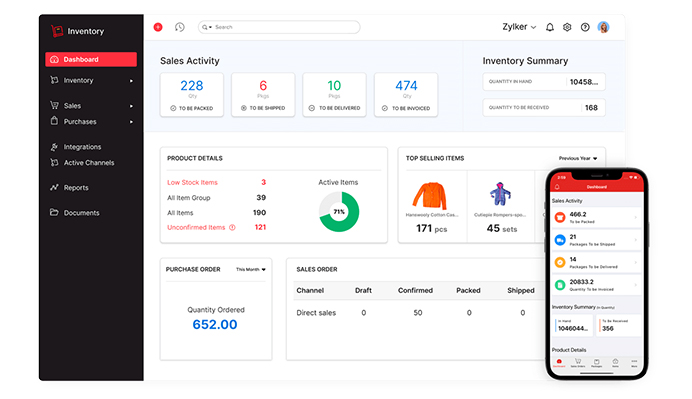
Zoho Inventory is a cloud-based solution designed to simplify inventory management. It empowers you to effortlessly generate and oversee sales and purchase orders while providing real-time inventory tracking.
5. Data Integration and Customer Insights
Analytics and smooth data integration are essential for brick-and-click operations to function well. Businesses can get important insights into customer preferences, behaviors, and trends by compiling and analyzing customer data from online and in-store interactions. Additionally, they can use tools like Mobile CRM to get insights on how their customers behave in the sales cycle.
These data inform the delivery of tailored shopping experiences, the improvement of product choices, and the customization of marketing strategies, all of which raise customer pleasure and boost corporate performance.
6. Omni-Channel Marketing
Omni-channel marketing is a comprehensive marketing strategy that makes sure that the brand is always visible and encourages consumer interaction at every touchpoint, whether it is through traditional advertising, email campaigns, social media, or in-store promotions.
Using this approach, companies meet customers where they are most comfortable, improving their market presence and client loyalty.
This approach aligns with the dynamic ways modern consumers interact with businesses, ultimately contributing to the effectiveness of the brick-and-click model. Below is how instore promotion may appear:

Examples of Success in This Business Model
1. Walmart
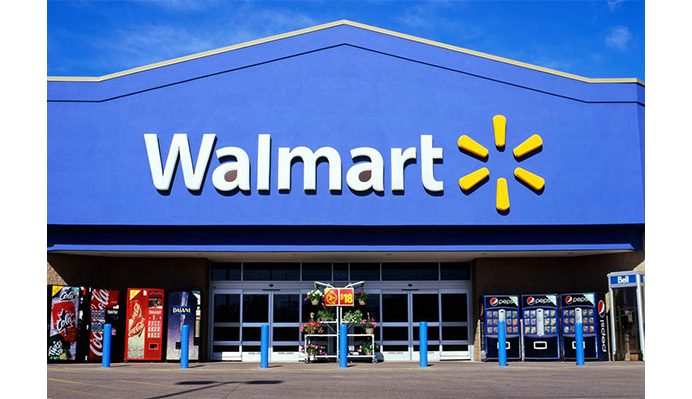
Walmart Physical Store – Image Source: Media Play News
Walmart offers various shopping options to cater to diverse customer preferences. Shoppers can visit physical stores to peruse products in person, order online through the official website or mobile app, and even opt for modern conveniences such as curbside pickup and same-day delivery.
By providing such versatile shopping experiences, Walmart has significantly expanded its reach, reaching a vast and varied customer base. It appeals to those who prefer traditional in-store shopping, as well as tech-savvy consumers who enjoy the ease of online orders.
Walmart reported having generated around $611 billion in revenue globally for the fiscal year that ended on January 31, 2023. This represented a notable increase of about seven percent over the prior year.
2. Best Buy
Best Buy, a prominent electronics retailer with a wide-reaching presence spanning the United States, Mexico, Canada, and Turkey, seamlessly embodies the bricks-and-clicks business model.
They provide customers with a user-friendly website and mobile app, allowing them to research, browse, and purchase electronics from the comfort of their homes or on the go.
Target, a retail giant, has achieved significant milestones through its adept implementation of the bricks-and-clicks business model. The company has reported impressive revenue growth, largely driven by robust online sales facilitated by its user-friendly website and mobile app.
The introduction of curbside pickup has been a resounding success, meeting the demands of contactless shopping. This, in turn, has fostered customer loyalty, underpinned by a flexible and convenient shopping experience.
Target’s optimized supply chain has ensured not only timely deliveries but also proficient inventory management. At the same time, their ability to provide a seamless shopping experience across various channels has given them a distinctive edge in the competitive retail arena.
Challenges of the Bricks-and-Clicks Business Model
- Juggling physical and online operations can be operationally complex.
- Seamlessly blending online and offline experiences is challenging, demanding integrated systems, unified data, and consistency.
- Maintaining physical stores can be expensive due to rent, utilities, and staff costs.
- Bricks-and-clicks retailers face strong competition from online-only competitors.
- Handling customer data for online operations can raise security and privacy issues.
Tactics to Use in This Model
To achieve successful results in this model, it’s essential to implement effective tactics that leverage the strengths of both channels while addressing potential challenges. Here are key tactics to consider:
1. Seamless Omnichannel Integration
In order to manage this integration, a robust inventory management system is crucial. This system ensures that inventory data, such as product availability and stock levels, is synchronized in real-time across physical and online channels.
This synchronization helps prevent issues like overstocking, where you have excess inventory that might go to waste, and understocking, which can lead to disappointed customers unable to find what they need.
Furthermore, businesses can encourage customers to interact with both their online and physical stores through cross-channel promotions. These promotions might include incentives to explore online offerings after an in-store visit or vice versa.
By creating a seamless flow between channels, customers are more likely to engage with the brand across various touchpoints, increasing their overall satisfaction and loyalty. Unified loyalty programs are another essential element of this integration.
These programs ensure that customers are rewarded consistently, regardless of whether they prefer to shop in physical stores or online.
Such loyalty initiatives foster a sense of fairness and inclusivity, making customers feel valued and appreciated. They also contribute to consistency in the shopping experience, a core principle of the model’s success.
2. Mobile Optimization
In today’s digital landscape, ensuring your online presence caters to mobile users is essential. With the widespread use of smartphones and tablets, businesses must prioritize optimizing their websites and applications for mobile devices. This entails creating a seamless and user-friendly experience for customers who access your services on their mobile gadgets.
To start, having a responsive website is a key aspect of mobile optimization. This means your website should automatically adjust its layout and design to fit different screen sizes, ensuring that it looks and functions well on small smartphone screens and larger tablet displays.
Adaptability is critical for providing a smooth and intuitive shopping experience. In addition to having a responsive website, investing in a dedicated mobile app can be a game-changer.
Mobile apps are designed with mobile users in mind, offering a more tailored and efficient experience. They can provide a user-friendly interface, making it easier for customers to browse products, make purchases, and navigate through your offerings.
When securing online transactions on mobile devices, offering secure mobile payment options is a must. Services like PayPal, Apple Pay, and Google Pay provide convenient and safe ways for customers to make purchases.
These options not only streamline the checkout process but also instill confidence in users, knowing that their financial information is protected.
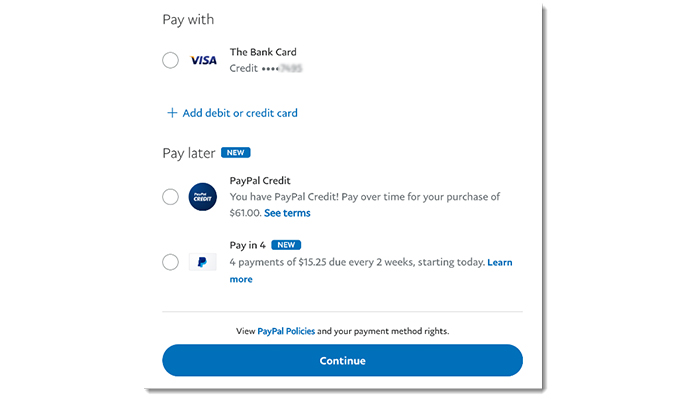
To further enhance the customer experience, businesses can leverage geolocation services. By utilizing these services, you can offer location-based offers and assistance to customers when they visit your physical stores.
For instance, you can send them special promotions or provide navigation guidance to help them navigate your store. This adds an extra layer of personalization and convenience to their in-store experience.
3. Personalization and Customer Engagement
This strategy involves using data analytics to understand your customers better and tailoring your interactions with them to create a more meaningful and satisfying experience.
Businesses collect customer insights from a variety of sources. This data can include purchase history, browsing behavior, demographic information, and more. By harnessing this wealth of information, companies can offer personalized product recommendations.
Imagine receiving suggestions for products or services that align perfectly with your interests and preferences. This not only enhances the customer’s experience but also increases the likelihood of making a sale.
Customization extends beyond suggesting products. It includes specialized advertising campaigns. You may increase the efficacy of your marketing campaigns by segmenting your consumer base and creating messages that appeal to particular audiences.
Making clients feel as though you understand their requirements and preferences is the goal of every marketing strategy, whether it be sending out customized email newsletters, making social media advertising that is specifically targeted, or even developing unique offers.
A/B testing is another valuable tool in the personalization toolbox. This technique involves comparing different versions of marketing strategies, website designs, or product recommendations to determine what works best.
By systematically experimenting and analyzing the results, businesses can fine-tune their approaches to optimize customer engagement and satisfaction.
To maintain a holistic view of your customers and their interactions with your business, Customer Relationship Management (CRM) systems come into play. These systems help businesses manage and organize customer data in one central location.
This unified customer database enables consistent and personalized interactions across various communication channels, whether it’s through email, social media, or in-store visits.
For instance, when a customer contacts your business, your staff can access their history and preferences, creating a more personalized and efficient interaction.
4. Customer Education and Training
This approach recognizes that both customers and employees need to be well-informed and proficient in navigating the blend of online and in-store shopping experiences. For customers, it’s crucial to educate them about the convenience and advantages of features like in-store pickup and online returns.
Many customers may be unaware of these options or how they work. By providing clear and accessible information, businesses can encourage customers to take advantage of these services, which can streamline their shopping experience.
For instance, explaining how they can order products online and pick them up at a nearby store at their convenience can save them time and effort. On the other side of the equation, employees need comprehensive training to excel in both in-store and online operations.
They should be well-prepared to assist customers with online orders, returns, and other
. This training ensures that employees are not only knowledgeable but also proficient in offering support for the full range of services provided.
It’s about empowering them to assist customers seamlessly, whether a customer is in the store or accessing services online.
5. Feedback and Continuous Improvement
Customers’ voices are invaluable in this model. Encouraging them to share their experiences and suggestions is the first step. By providing channels for feedback, such as surveys, reviews, or even direct communication, you open up opportunities for customers to express their thoughts and preferences.
This feedback can be a goldmine of insights that help you identify areas for improvement. However, it’s not just about gathering feedback; it’s about acting on it. When customers take the time to provide feedback, they expect to see changes and improvements in response.
This means that businesses must be willing to listen and adapt. It might involve refining the online shopping experience, making in-store interactions more efficient, or introducing new features suggested by customers.
Continuous improvement doesn’t stop with customer feedback alone. It also involves staying attuned to evolving market trends and emerging technologies. In the fast-paced world of retail, what works today might not work tomorrow.
Businesses must be agile and open to embracing new tools and strategies that align with changing customer needs and industry developments. By continuously iterating and innovating based on customer feedback, market trends, and technological advancements, businesses can maintain their competitive edge.
Conclusion
The bricks-and-clicks business model is a dynamic and versatile approach to modern commerce. This model has evolved over time, driven by the evolving retail landscape and changing consumer preferences.
It provides operational flexibility, a unified shopping experience, improved customer satisfaction, efficient inventory management, data-driven insights, and an omnichannel marketing approach. Customers benefit from the convenience of choosing how they interact with businesses, whether in physical stores or through online platforms, tailoring their shopping experience to their preferences.
However, this model has challenges, including operational complexity, the need for seamless integration, high operating costs, competition from online-only retailers, and security and privacy concerns.
In order to succeed in the Bricks-and-Clicks model, businesses must employ effective tactics, such as seamless omnichannel integration, mobile optimization, personalization and customer engagement, customer education and training, and continuous feedback collection for improvement.
These strategies enable companies to harness the strengths of both online and offline channels while mitigating the challenges of this hybrid approach.
Acowebs are the developers of Woocommerce Custom Product Addons which is a optimized, lightweight, and fruitful plugin that is simply the best to add extra product options using its custom form builder easily. WooCommerce custom fields also comes with drag and drop form builder, 22+ field types and custom price formula.












 Login
Login
 Cart
Cart






